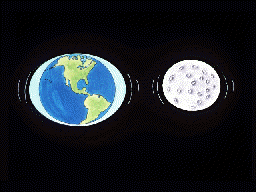This image shows the Earth and the moon, and the bulges produced on each side from the tides.
Click on image for full size
Tidal Forces
The force of gravity caused by an object gets weaker as you move
farther away from that object. In this picture, the Earth is pulling
on the Moon, and the Moon is pulling on the Earth. The Moon pulls
more strongly on the side of the Earth facing the Moon than on the
side facing away from the Moon. Because the gravitational force on one
side of the planet is different from that on the other side, it is called a
tidal force.
Because planets are not perfectly rigid, they deform when subjected
to such tidal forces. They deform as if they are being pushed from
the top and bottom, and a bulge forms on either side of the planet (Earth also bulges at the equator all the way around because it is spinning).
These two bulges are called tides. On Earth, near the ocean,
these tides can actually be seen. The ocean water rises high along the
beach, twice each day.
If a body is very rigid or is not held together well, instead of
getting pushed and pulled out of shape, the tidal forces can actually
tear the body in half, as with comet
Shoemaker-Levy 9.
You might also be interested in:
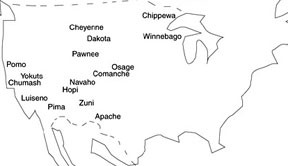
People have been living in North America for a long, long time. The first people to live there were the Native Americans. They didn't have clocks or calendars so they watched tides, the Sun, the Moon,
...more
AU stands for Astronomical Units. It is an easy way to measure large distances in space. It is the distance between the Earth and the Sun, which is about 93 million miles. For really big distances, we
...more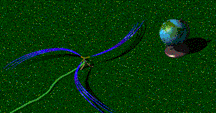
The solar wind is formed as the Sun's top layer blows off into space. It carries magnetic fields still attached to the Sun. Streams appear to flow into space as if they are spiraling out from the Sun,
...more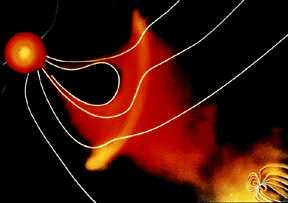
For a planet to be affected by a blob of material being ejected by the sun, the planet must be in the path of the blob, as shown in this picture. The Earth and its magnetosphere are shown in the bottom
...more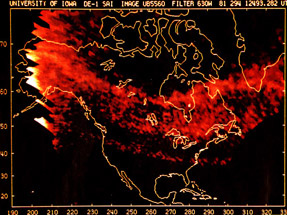
If someone says they saw an aurora, you might picture something like this. There is another type of aurora that we can't see. These aurora are called SAR arcs. The SAR stands for Stable Auroral Red. That
...more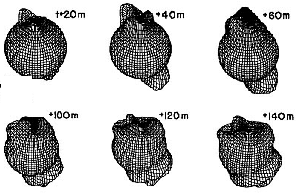
This figure shows the effect of the aurora on the atmosphere. When FAC's enter the atmosphere and create the aurora, they heat the atmosphere suddenly and abruptly. This creates an impulse which travels
...more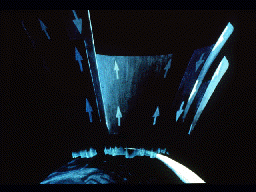
This picture shows the flowing of particles into and out of the auroral zone, as Field-Aligned currents (FAC's) take at short-cut through the atmosphere. Some of the particles entering the auroral zone
...more


